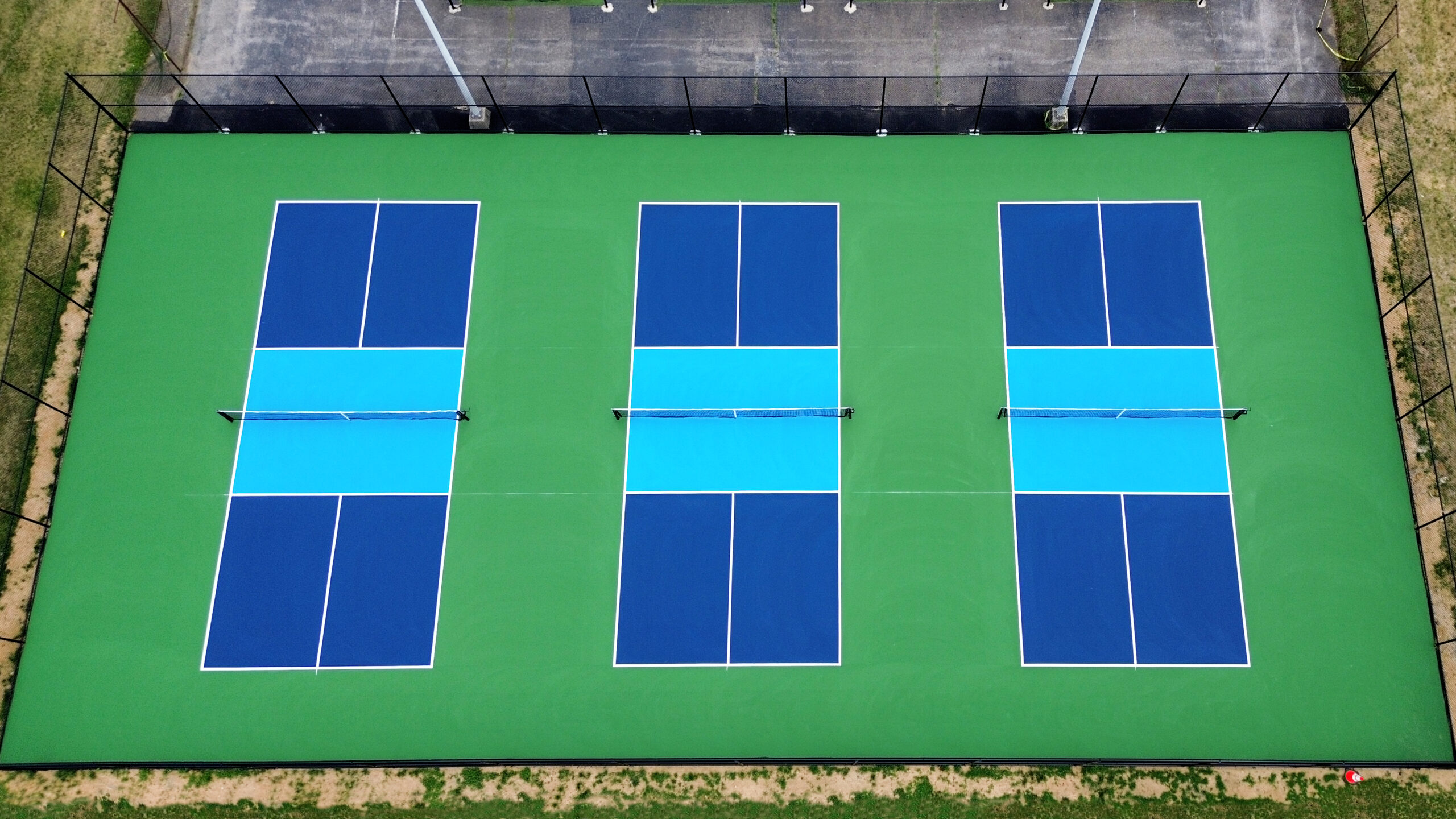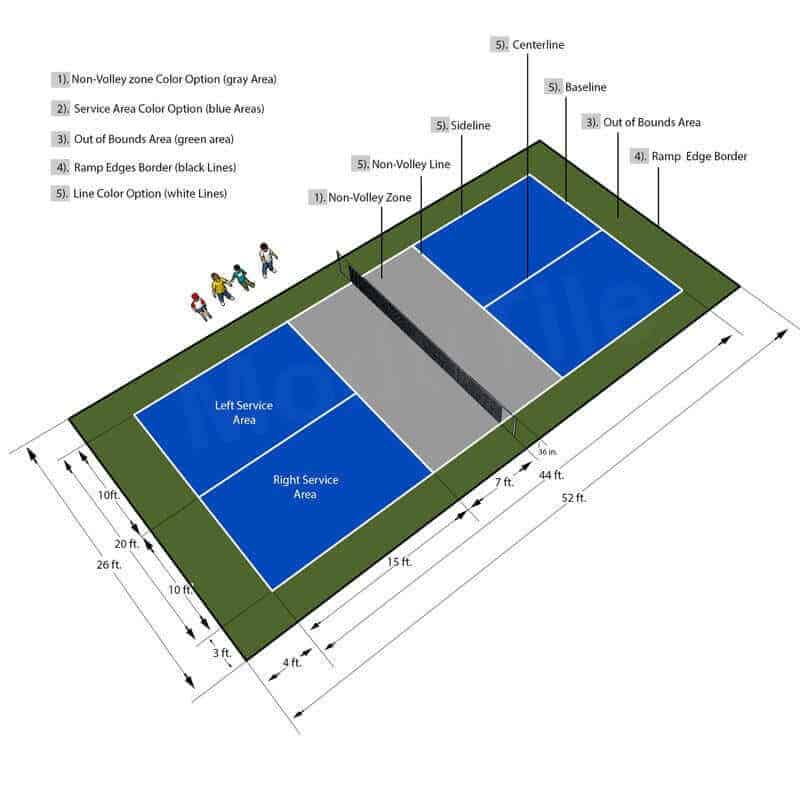Interior and Outdoor Pickleball Court Construction Solutions
Interior and Outdoor Pickleball Court Construction Solutions
Blog Article
Sustainable Practices in Pickleball Court Building You Need To Know
As the appeal of pickleball continues to increase, so too does the need for lasting methods in court building and construction. This strategy not just addresses environmental concerns however likewise boosts the durability and functionality of the courts. From picking green materials to carrying out effective water drainage and energy-saving illumination options, there are numerous approaches to take into consideration. Yet, the impact of these techniques expands far beyond the court itself. Recognizing exactly how each aspect contributes to an extra sustainable future invites additionally expedition right into the intricate balance between leisure growth and ecological stewardship.
Picking Eco-Friendly Products
Picking green products is a vital step in the construction of lasting pickleball courts. The selection of sustainable products not just reduces environmental impact however likewise boosts the durability and efficiency of the court. Secret products consist of reused rubber for the surface area, which offers outstanding longevity and shock absorption while drawing away waste from land fills.
In addition, utilizing in your area sourced materials decreases transport emissions and supports regional economic climates. Pickleball court construction. As an example, making use of indigenous hardwoods for fence and seats can supply a sustainable aesthetic while ensuring durability against the elements.
Including absorptive materials for court structures can better add to sustainability by enabling all-natural water drainage and lowering drainage. These choices not only protect neighborhood environments but also promote much healthier play settings.
Effective Drainage Solutions
While the selection of environmentally friendly materials is necessary, carrying out efficient drainage services is just as important for maintaining sustainable pickleball courts. Proper water drainage not only secures the court surface area from water damage yet additionally decreases erosion and runoff, promoting ecological integrity.
Effective drainage systems can include permeable paving, which permits water to infiltrate the ground instead of merging externally. This reduces the probability of standing water, which can bring about mold and mildew and other maintenance concerns. Additionally, including purposefully placed water drainage channels and swales can guide excess water away from the court area, making sure a completely dry playing surface area and preventing soil disintegration.
Making use of indigenous vegetation in the landscaping around the courts can even more improve drainage by taking in excess water and reducing drainage. These plants call for much less watering and advertise biodiversity, aligning with lasting methods.
Additionally, it is critical to regularly keep the drain system to ensure its long-term effectiveness. This includes clearing up particles and tracking for clogs. By prioritizing reliable drain services, pickleball court erectors can dramatically add to the sustainability and long life of the facility, eventually benefiting both gamers and the setting.
Energy-Efficient Illumination Options
As the need for pickleball remains to grow, integrating energy-efficient lighting choices right into court style has actually become progressively important for sustainability. Traditional lighting systems usually take in too much energy, contributing to greater operational expenses and environmental effect. Consequently, taking on modern, energy-efficient modern technologies is necessary for both brand-new constructions and remodellings.
LED (Light Emitting Diode) illumination attracts attention as a leading choice because of its long life and power financial savings (Pickleball court construction). Contrasted to conventional illumination, LEDs make use of around 75% much less power and can last up to 25 times much longer, dramatically lowering maintenance expenses. In addition, the directional nature of LED lights reduces light contamination, making sure that illumination is concentrated on the court instead of surrounding locations.

Lasting Surface Area Alternatives
Checking out sustainable surface area options for pickleball courts has actually gained traction amongst building contractors and gamers alike. The emphasis on environment-friendly materials not just lines up with the growing ecological awareness yet also improves the performance and durability of the courts.
This material offers excellent shock absorption, minimizing the risk of injuries for players while promoting sustainability. These ceramic tiles are very easy to install and replace, and their versatility enables for different court configurations.
All-natural lawn courts are additionally becoming a sustainable choice, advertising biodiversity and lowering the heat island impact. Nonetheless, they call for regular upkeep and water, which might not line up with all sustainability goals.

Water Preservation Techniques

An additional effective technique involves the installment of rainwater harvesting systems. These systems store and accumulate rainwater for use in maintaining court surface areas and landscaping. This strategy not only conserves potable water yet also minimizes reliance on metropolitan sources.
Moreover, using drought-resistant landscaping around the courts is vital. check my blog Indigenous plants need much less water and are much better adjusted to local climate conditions, therefore lowering general water consumption. Furthermore, making use of effective watering systems, such as drip watering, makes sure that water is supplied straight to plant origins, reducing dissipation and waste.
Conclusion
Integrating sustainable methods in pickleball court use this link building dramatically adds to ecological conservation and source efficiency. Using environmentally friendly products, executing reliable water drainage services, and adopting energy-efficient lights options can considerably reduce environmental influence. Exploring lasting surface area choices and employing water conservation techniques boost the total sustainability of these leisure facilities. By focusing on these techniques, the construction of pickleball courts can straighten with broader ecological goals while advertising long life and performance within areas.
As the appeal of pickleball proceeds to climb, so too does the need for sustainable methods in court building and construction.Selecting environment-friendly products is a vital action in the construction of lasting pickleball courts. By focusing on energy-efficient lights options, pickleball court builders can contribute to a more lasting future while fulfilling the requirements of stakeholders and players alike.Integrating sustainable surface area options not just boosts the efficiency of website link pickleball courts but additionally leads the means for executing reliable water preservation methods.Incorporating sustainable practices in pickleball court building and construction dramatically contributes to ecological conservation and source performance.
Report this page